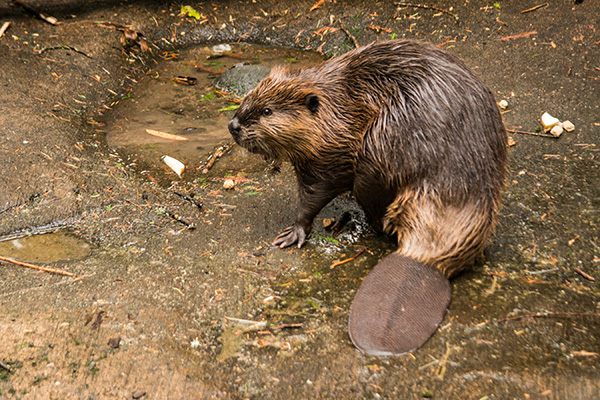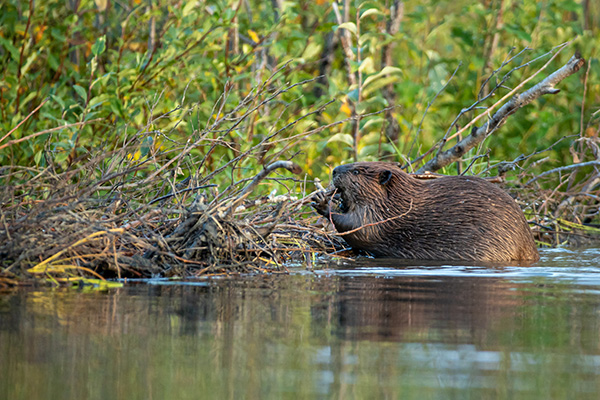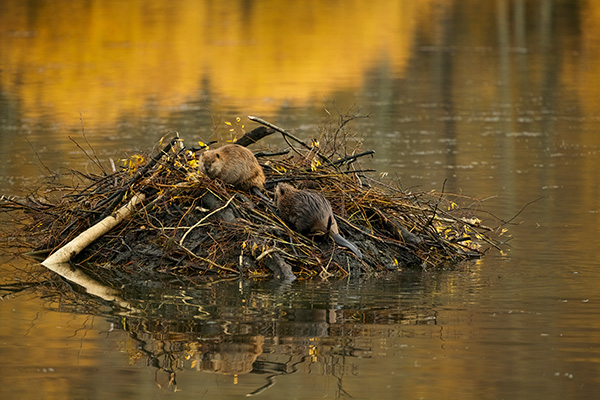Overview
Beavers are America’s largest rodent and inhabit much of the United States. Many early European settlers made their living trapping these large rodents for their fur. Their fur was crafted into coats, hats, and other articles of clothing due to its warmth, softness, and water-resistant properties.
Beavers have developed a reputation as woodland engineers because of their ability to construct dams using trees they collect from the woods. They also create canals and trails for easy access to food and building materials. Beavers also create lodges that are used as shelter from weather conditions and provide a safe place to rest, hidden from predators. They will feed on vegetation and woody material. Beavers may store food in a cache, especially during the winter months. Some wood is considered inedible to beavers, but they will still use these trees to build lodges and dams. Beavers do not always create structures; they only make structures when needed. They also readily create burrows in the side of a riverbank and may not create a dam if the water is deep enough.
Beavers are social animals that will live with their children in small family groups. Generally, only the two adult beavers in a group will breed. The offspring eventually leave their parents to find a mate to establish a new dam-building family.
Beavers can be easily distinguished from other aquatic rodents, such as muskrats, due to their large size and flattened, broad tail. They will use their tail to smack the water's surface to warn other beavers of danger. Beavers also have large, orange incisors that they use to topple trees over by gnawing through the trunk. Since beavers spend much of their time in water, they have webbed feet that help them move quickly when they leave dry land. Beavers are uniquely suited to an aquatic lifestyle and can stay submerged for up to fifteen minutes. When on land, beavers are not very agile animals and are vulnerable to predators when they leave the water.



